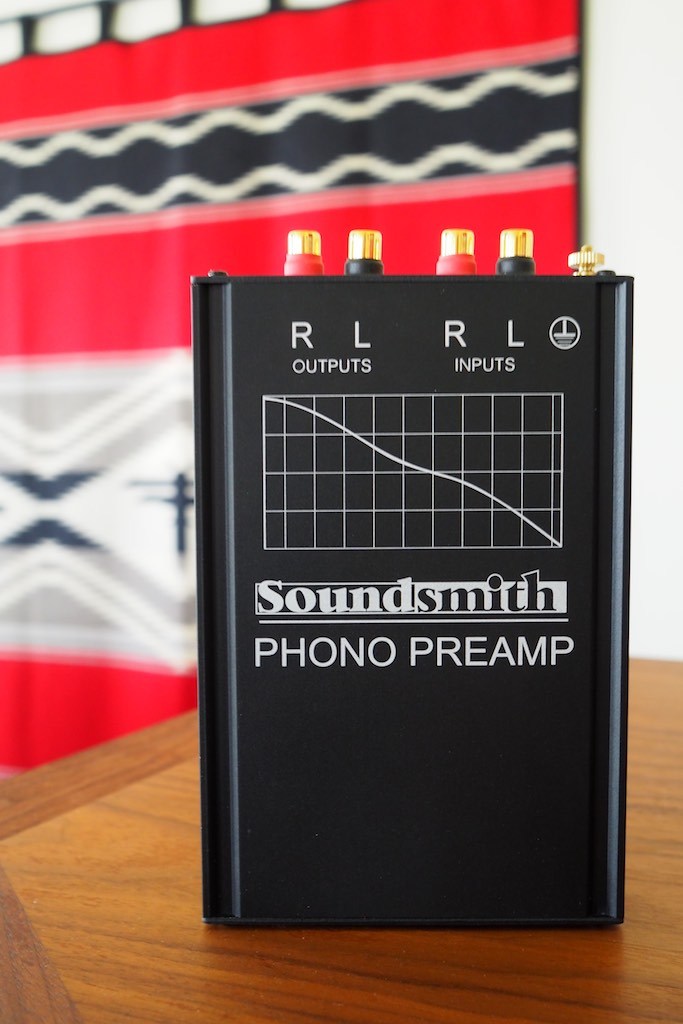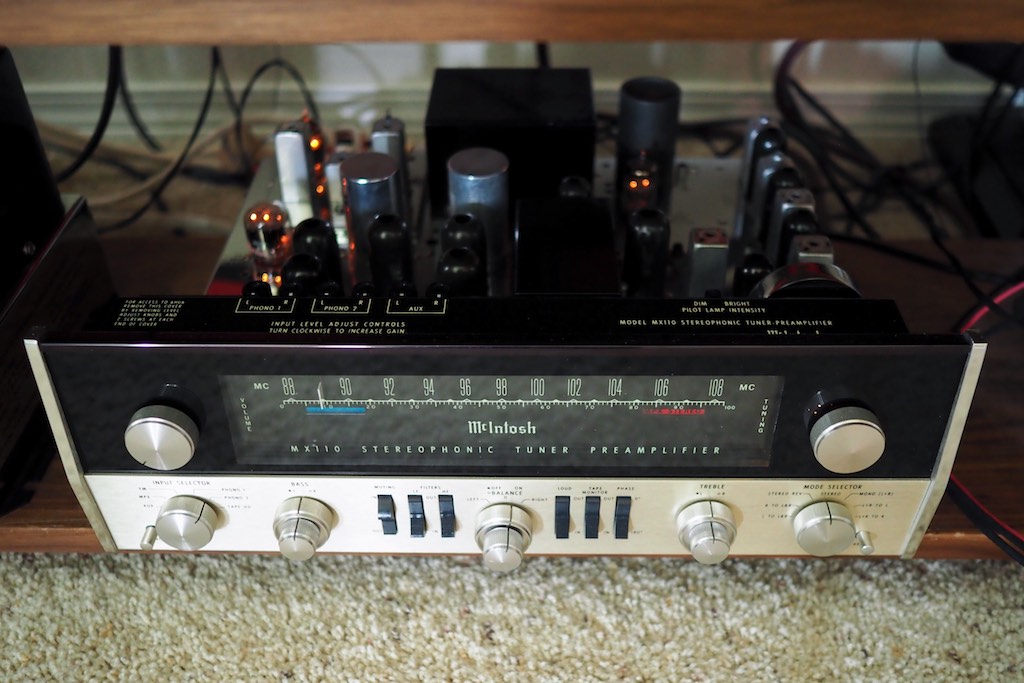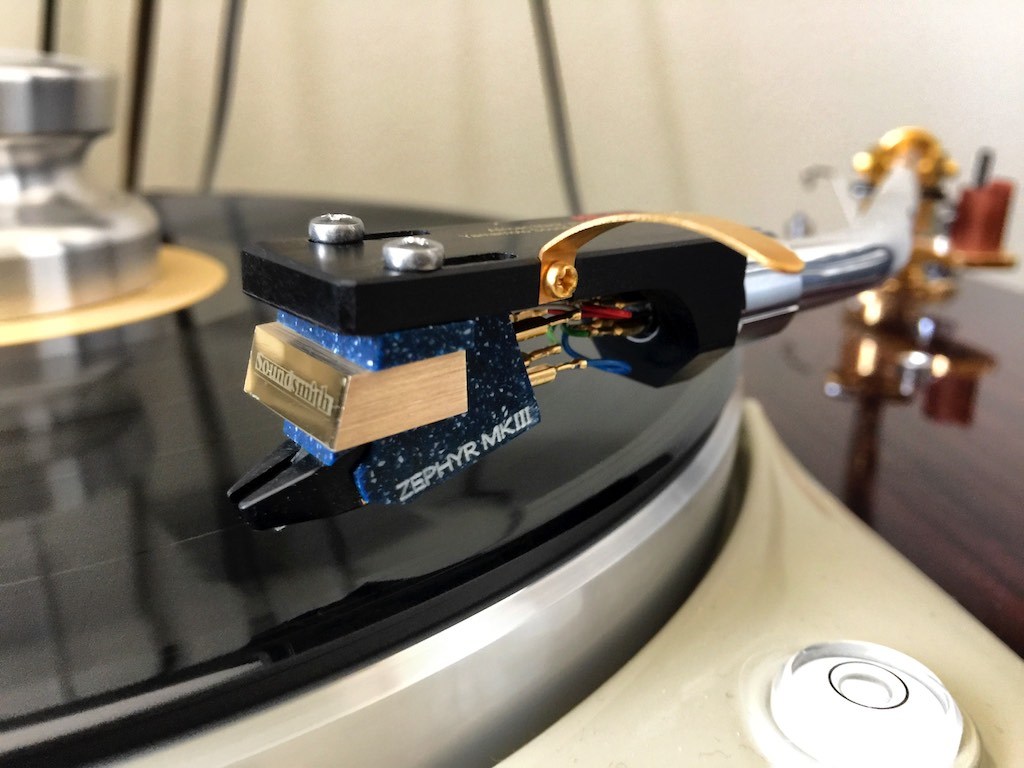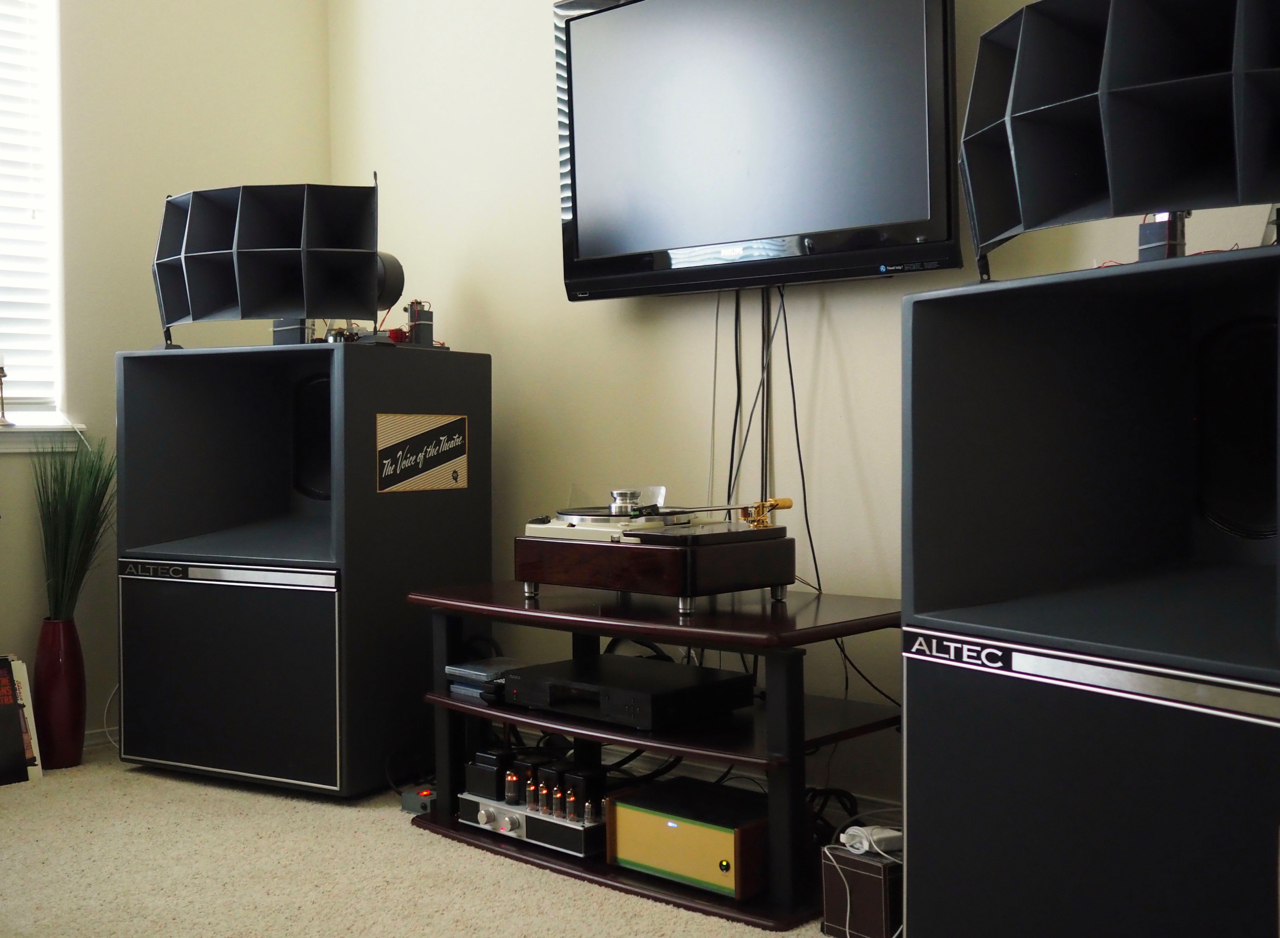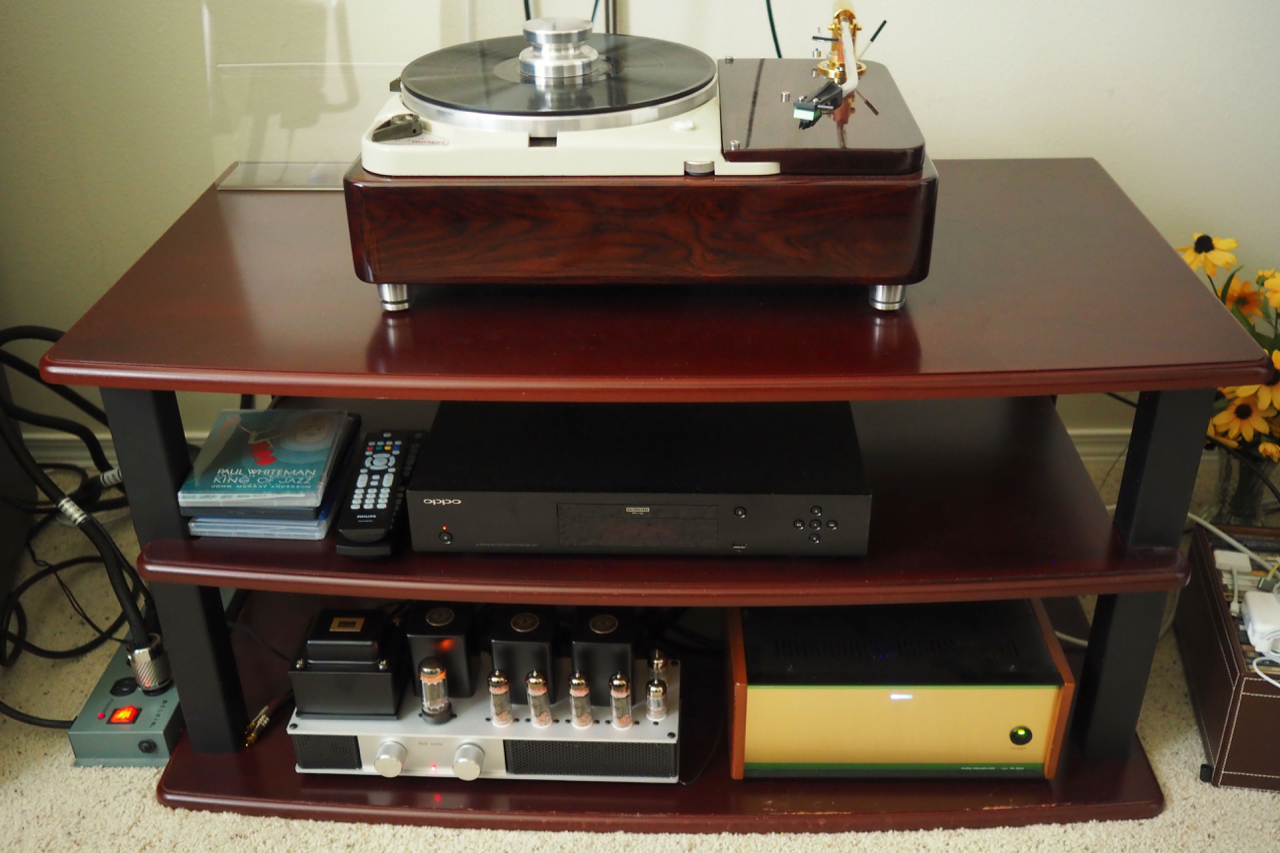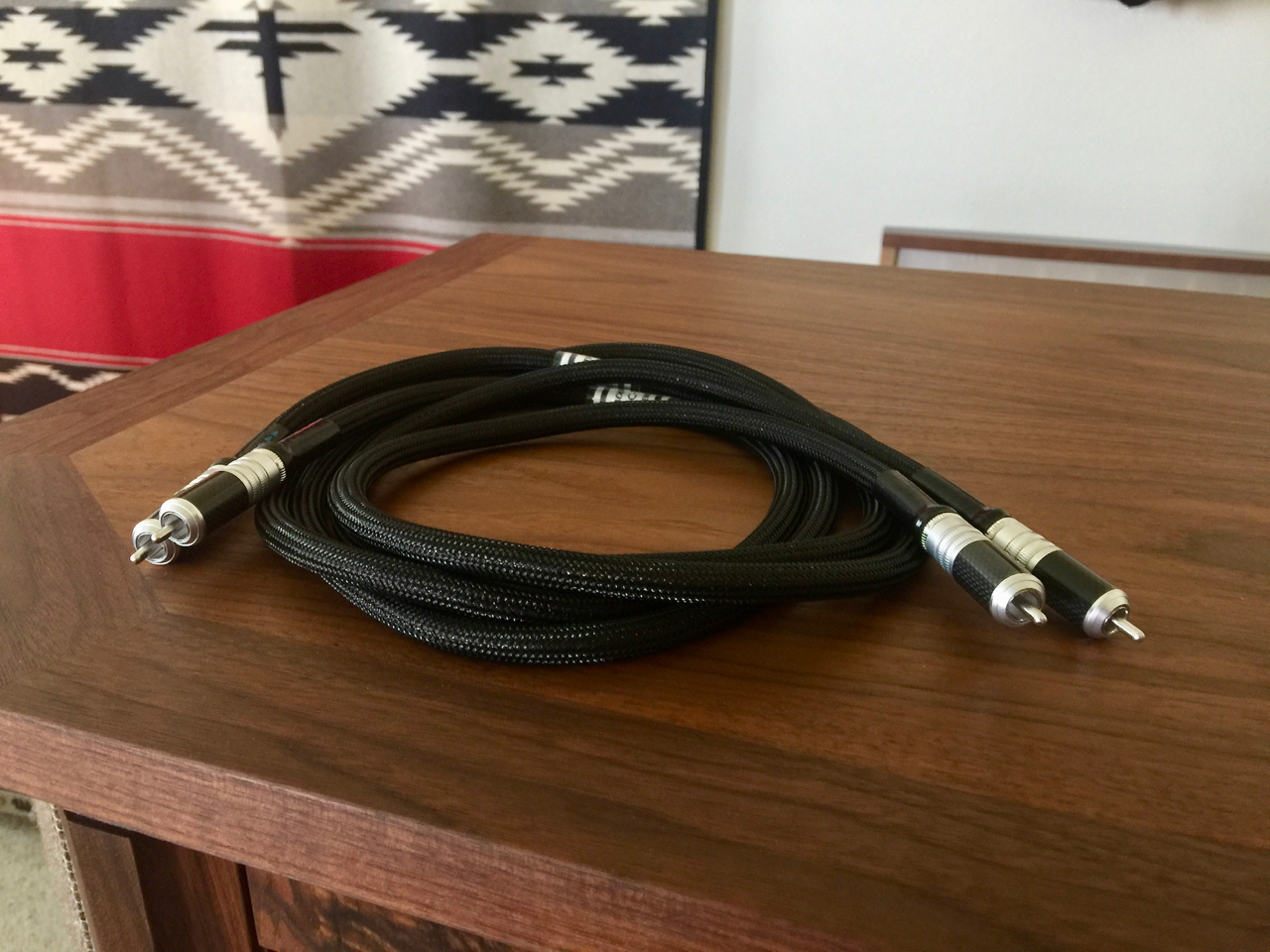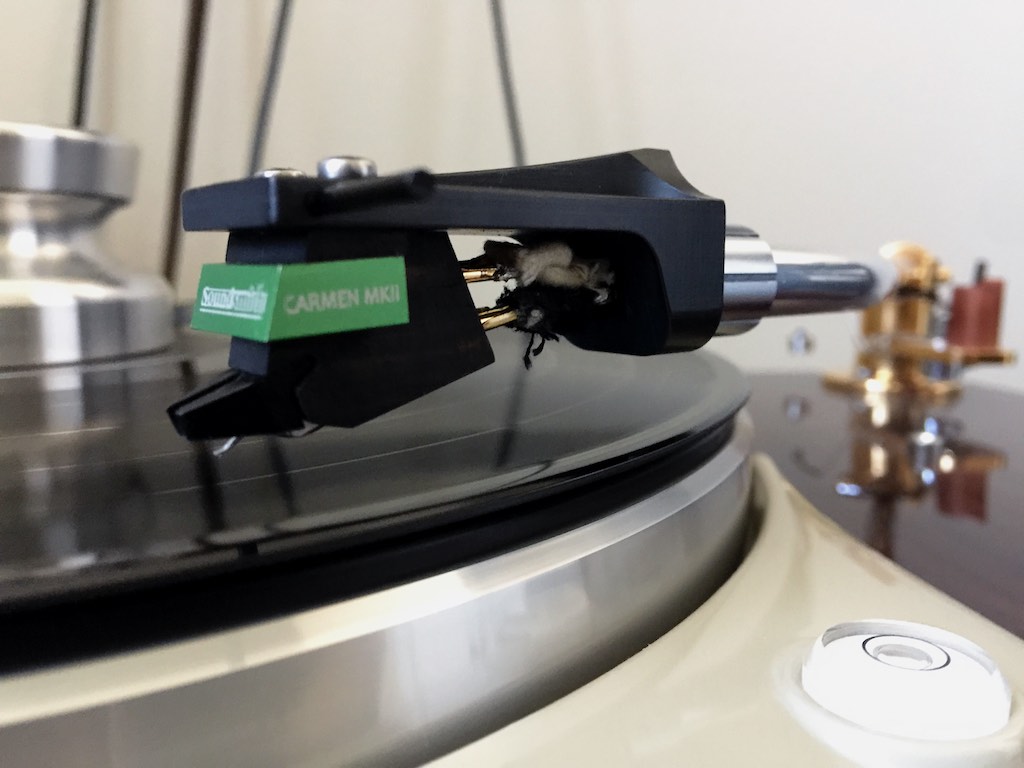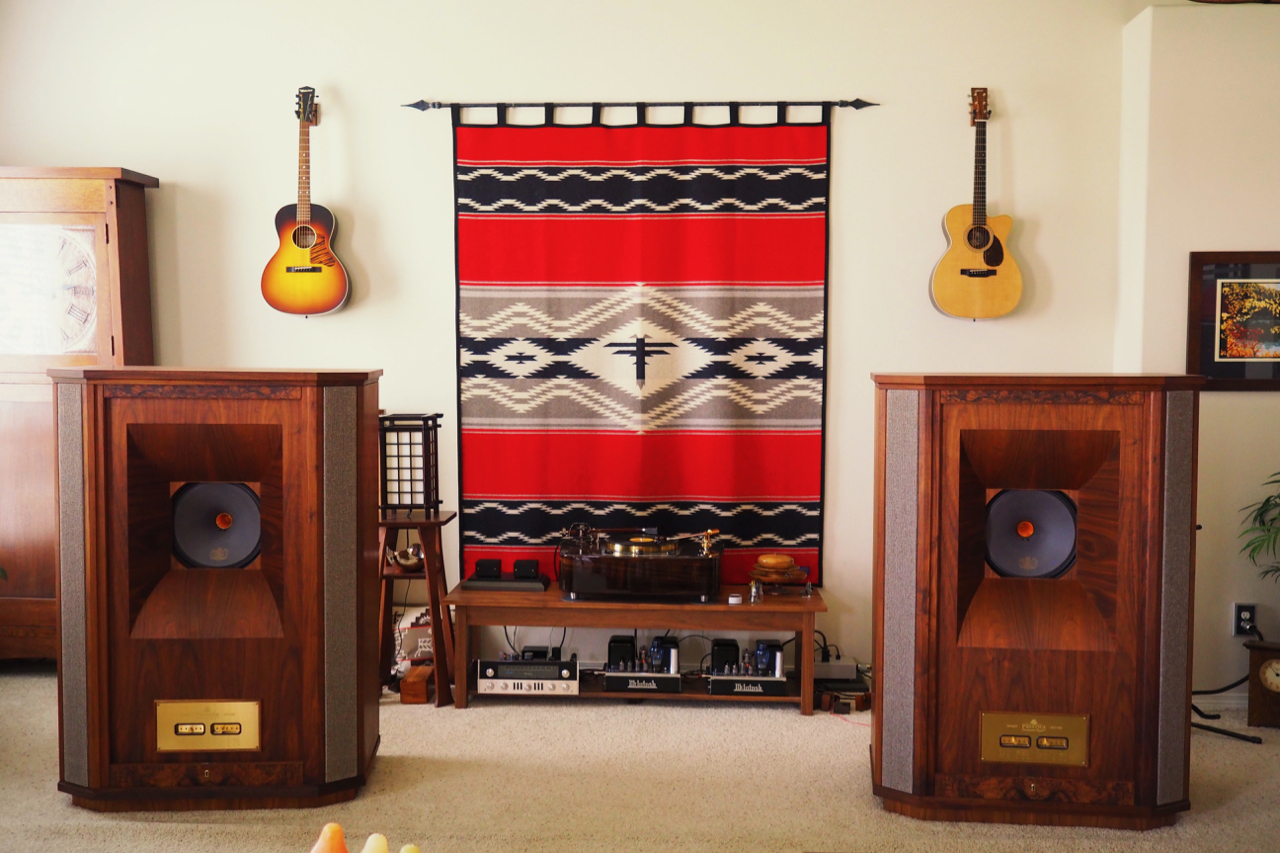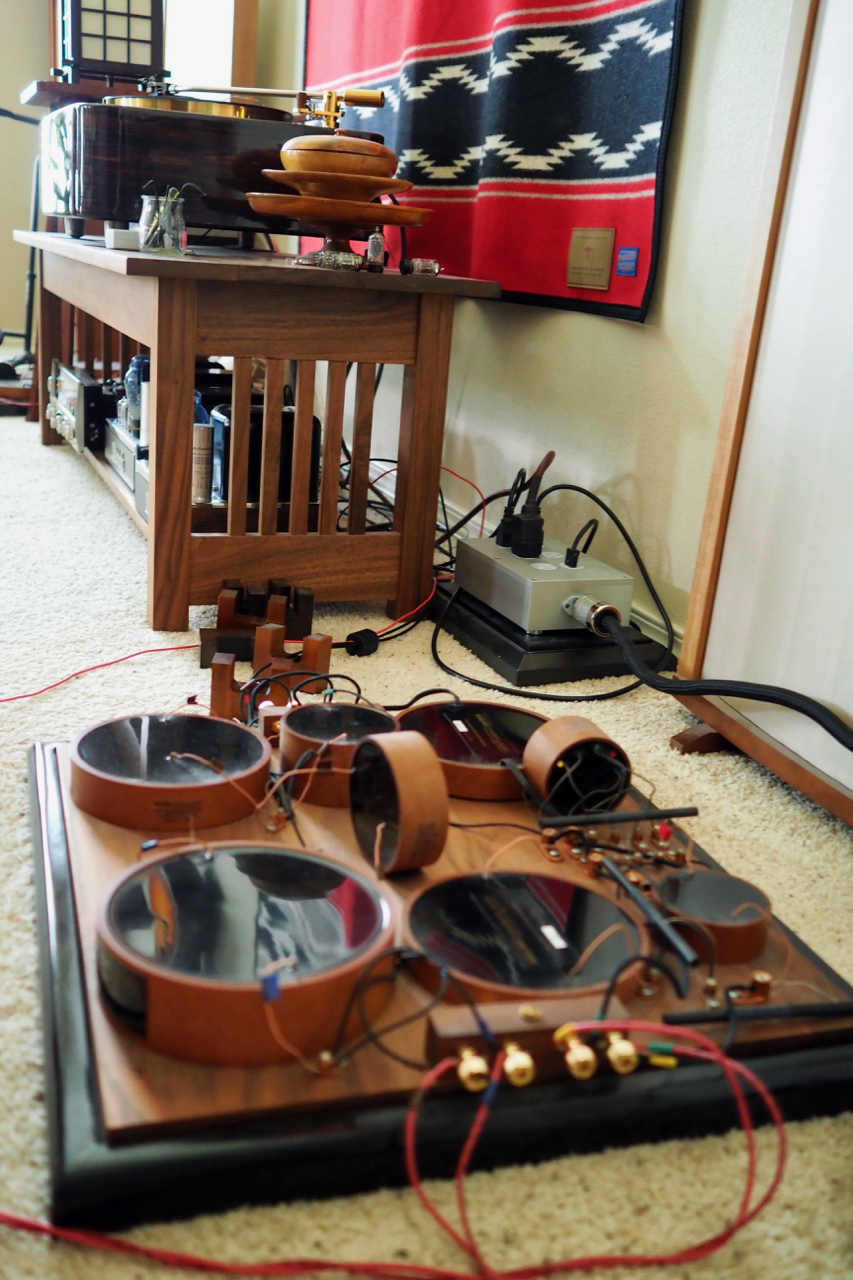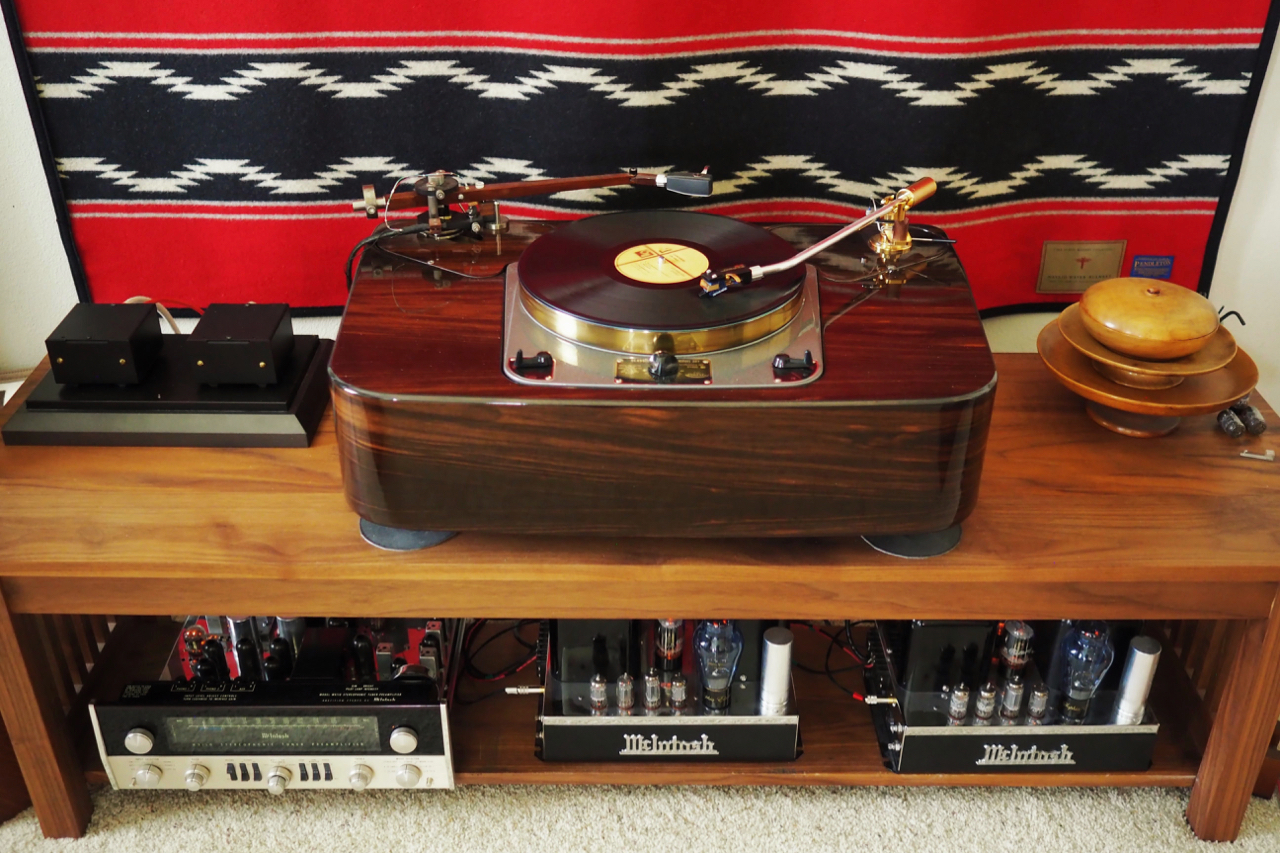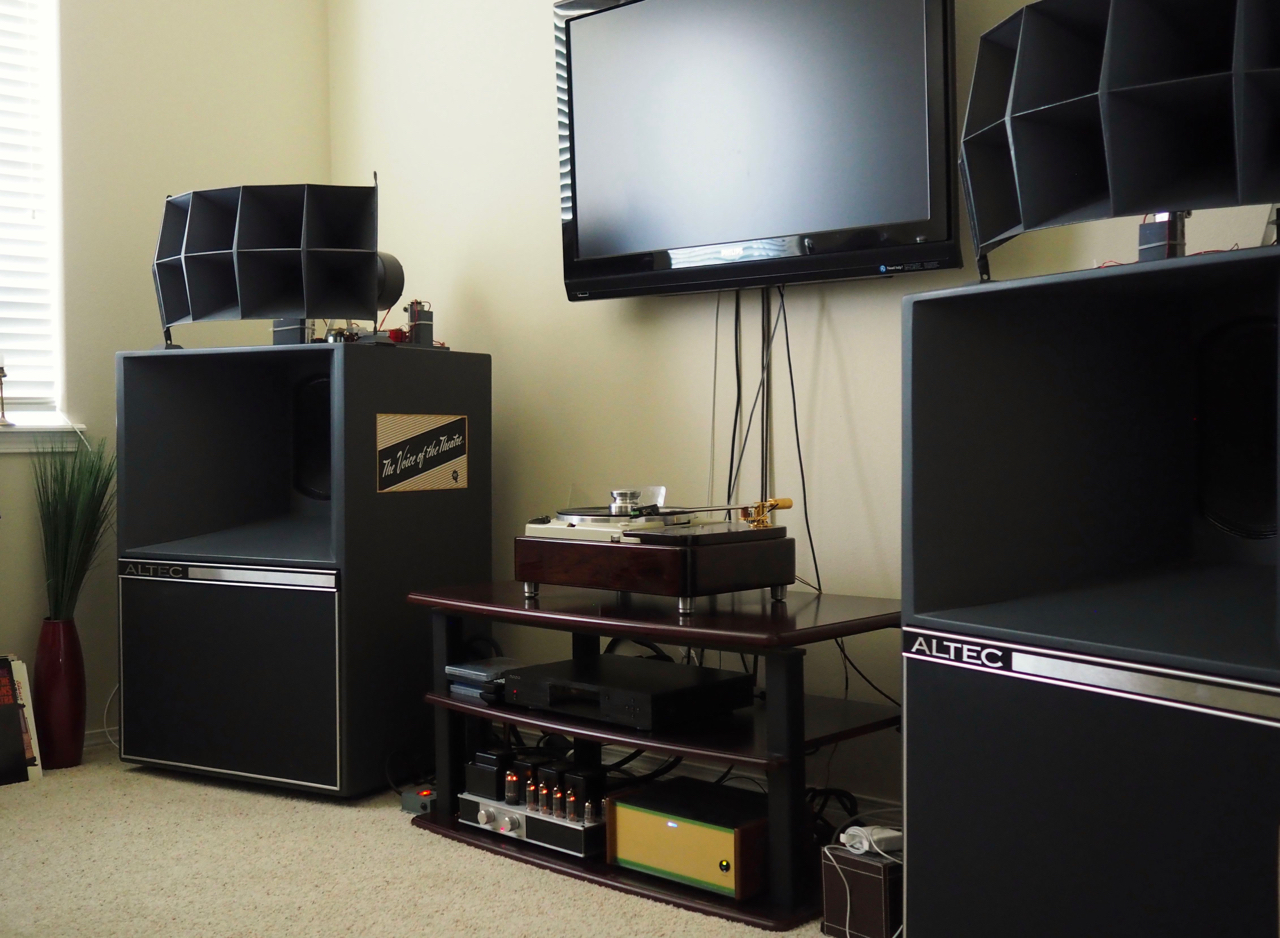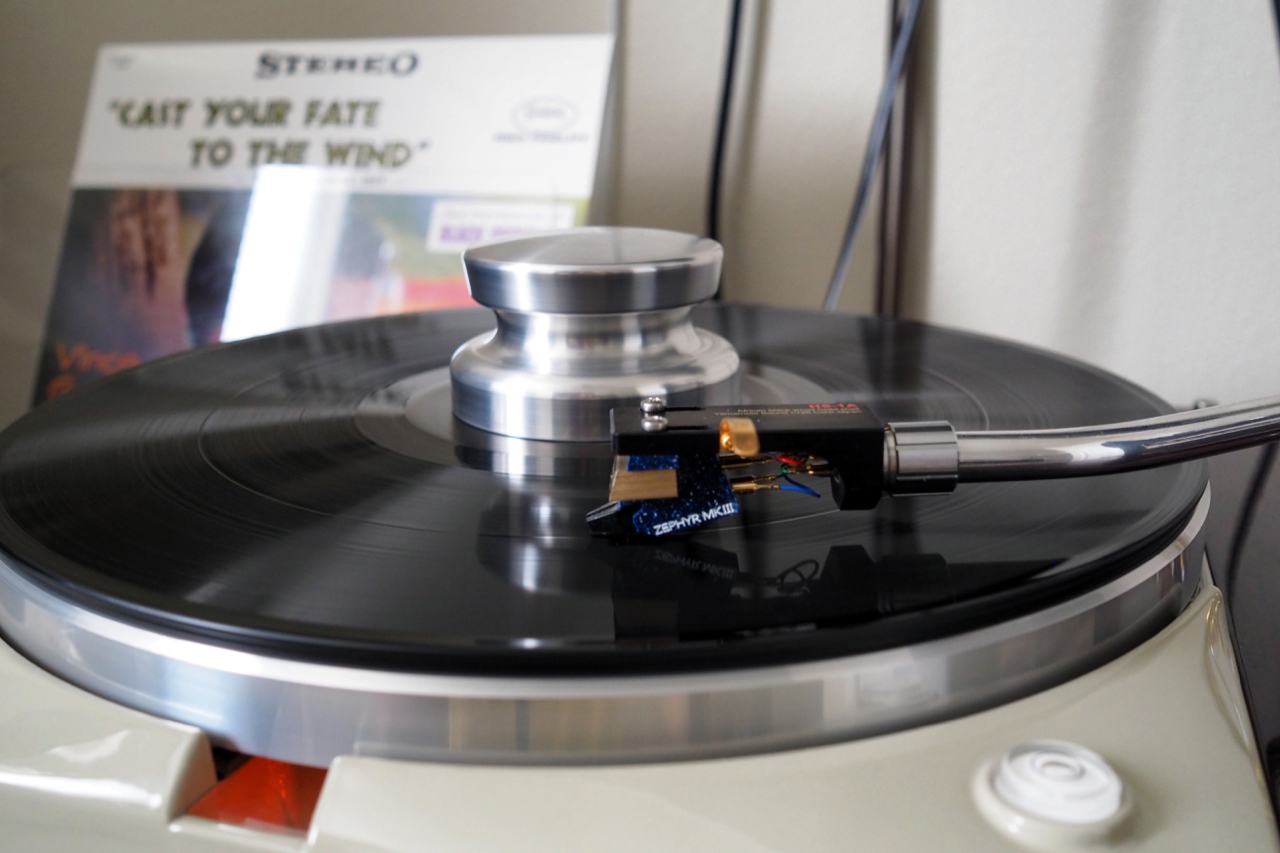I'm nearing the point of finishing up my Soundsmith Zephyr Mk III photograph cartridge review for Positive Feedback, and as is my custom I thought I'd give you a sneak peek before I send it off to ye olde editors Dave and David for review and publication!
I hope you enjoy it!
¸¸.•*¨*•♫♪ ¸¸.•*¨*•♫♪ ¸¸.•*¨*•♫♪
Peter Ledermann is the Artisan Smithy of Sound, Part 2: The New Soundsmith Zephyr Mk III Phonograph Cartridge!
By Jeff Day
If you read Part 1 of this Soundsmith review series in Positive Feedback Issue 98 (HERE), where I wrote about the new Carmen Mk II phonograph cartridge, you know that I found the Carmen Mk II to be one of the most musically enjoyable phonograph cartridges I have ever written about.
The Carmen Mk II demonstrated desirable qualities in abundance by being relatively affordable ($1000 USD), having a naturally warm, dimensional, and musical balance, with the added bonus of having a relatively high output so you don’t have to use an expensive step-up transformer with it to play music.
The Carmen Mk II has become my go-to recommendation for those who want to enrich their musical life with a new high-performance phonograph cartridge that possesses both musical and sonic prowess without breaking the bank.
For those who haven’t yet read Part 1 let me summarize a little from the introduction portion of that article to set the stage for the subject of this article, the new Soundsmith Zephyr Mk III phonograph cartridge.
In Part 1 I described how I had asked Peter if he would be so kind as to make a recommendation of a Soundsmith cartridge with the traits I desired, that would work well with my 12-inch Thomas Schick and 12.5-inch Pete Riggle Audio Engineering Woody SPU tonearms, which are the primary tonearms I use on my Classic Turntable Company Classic 301 and Artisan Fidelity Thorens TD-124 Statement player systems, respectively.
Peter makes low, medium, and high compliance cartridge designs to complement various listeners’ tonearm needs, but for my Schick & Woody SPU tonearms Peter recommended both his new Soundsmith Carmen Mk II and Zephyr Mk III phonograph cartridges as being good choices, being medium and low-compliance designs.
Peter recommended the Carmen Mk II (above) as closely matching my personal criteria of a lush, dimensional, and musical presentation, and with a high output (2.12mV) so that a step-up transformer is not necessary.
Peter also recommended the Zephyr Mk III, which he described as having a more detailed presentation, with “… truly remarkable separation and sound stage imaging at a level not previously achievable in a modestly priced design …”, and which has a high output of 2.4mV.
Peter sent me both his new Carmen Mk II and new Zephyr Mk III phonograph cartridges, as well as his MMP3 Mk II phono preamplifier to listen to and write about.
I’ll be describing the Zephyr Mk III phonograph cartridge in this article, and the MMP3 Mk II phono preamplifier in a subsequent article.
Peter Ledermann is the Soundsmith!
I’d like to start by telling you about the fascinating smithy of sound, Peter Ledermann.
Peter opened Soundsmith as a repair center in 1969, at Audio Experts in White Plains, NY, and Peter has now been smithing sound for 47 years!
Since 1969, Peter has taught audio engineering and audio electronics service to students, has worked at RAM Audio in Danbury, CT (1973), was Director of Engineering for the Bozak Corporation in Norwalk, CT (1976), has worked at the IBM T.J. Watson research center thinktank (1980), and then in 1991 Peter left IBM to pursue Soundsmith full time.
After Peter established Soundsmith in 1969, Soundsmith evolved into a specialty repair and restoration center with a stellar reputation, servicing audio equipment from all over the world.
In fact, as I mentioned in Part 1, I plan to get my beloved vintage McIntosh MX110Z tuner-preamplifier to Peter at some point in the future for a check-up & tune-up (and a needed volume pot rebuild), to ensure that I can continue to enjoy its musical charms for the rest of my days.
You can read more detailed bio information about Peter at the Soundsmith web site HERE and HERE, and I recommend reading both links for the additional background they provide.
More specific to this review, Peter has also been designing and building his own phonograph cartridges, and rebuilding all brands of cartridges, for more than 45 years now.
In addition to Peter’s Soundsmith line of phonograph cartridges, Soundsmith is also the world center of expertise related to B&O phonograph cartridges, and is licensed by B&O to manufacture their cartridge designs. If you are a B&O aficionado, or just want to learn more about Soundsmith’s B&O phonograph cartridges and services, you can read more about them HERE.
In addition to B&O and Soundsmith phonograph cartridges, Peter also offers phono preamplifiers (like the MMP3 Mk II I’ll be telling you about in a future article), various useful accessories, loudspeakers, Strain Gauge cartridge/preamplifier systems, and audio amplifiers, all which you can read more about at the links HERE.
Soundsmith Phonograph Cartridges
Peter currently offers eighteen different Soundsmith phonograph cartridge models that are specifically designed to complement various audio enthusiasts’ tastes and system needs. If you have a specific or unique application in mind, I recommend you contact Peter and ask for advice, just as I did.
Peter prefers fixed-coil phonograph cartridge designs to the more ubiquitous moving-coil designs, as he says fixed-coil designs have vast advantages over moving-coil designs in terms of lower internal moving mass, more robust suspension, and flexibility of output levels.
Peter's Soundsmith phonograph cartridges are also unique in that they are all hand-made in the USA, and your initial investment is protected because they are rebuildable multiple times, for 20% or less of the purchase price, depending on the model.
Peter says that the fixed-coil generator has at least a 5 times lower internal mass than a moving-coil generator, which results in much lower stored & reflected energy, and a higher natural resonant frequency / lower amplitude resonance.
In practical performance terms, what this means is that as a cartridge tracks the information in the record grooves, the generator moves up to an incredible 20,000 times a second, so the much lower internal moving mass of the fixed-coil generator becomes significant, making it able to much more accurately track the encoded information, and giving at least 10 times better performance than a moving-coil cartridge is capable of in the same circumstances.
Peter says fixed-coil designs allow for a much more robust suspension than moving-coil designs, which means that the cartridge will have a greater chance of surviving “accidents” as well as being much more likely to stay in perfect internal alignment during long term use.
Specifically, Peter says, “This is because - unlike MC designs where the entire armature and coil assembly is tethered by a single wire, connected to a single point - moving iron designs allow a continuous (and difficult to distort or break) combinational suspension and damping system that is fully-bonded to the moving element. This dual-purpose suspension and damping system is bonded to 90% of the moving element at any tracking force and is not variable as is found in single wire pivot MC designs. This fully-bonded arrangement is not only hard to damage, it all but eliminates azimuth-rotation as a result of long term use - or even accidental abuse.”
Peter cites the third major advantage of his fixed-coil designs is that the output levels can be designed to suit any preamp without changing the voicing of the cartridge, which means that you can boost output level and eliminate the need for an expensive step-up transformer.
Two of my three phono preamplifiers require step-up transformers for low output moving-coil cartridges, so not having to worry about the expense of extra step-ups for a new phonograph cartridge is a big plus for me.
Peter says, “An important consideration of fixed coil designs is that the coil designs themselves can be changed (even to mono designs) without changing the moving mass of the system. This means that for a given model design the output levels can be specified to suit any preamp requirement, without changing any other specification of a developed cartridge model. In contrast with an MC design, the addition of many additional layers of wire windings can add substantially to the problems of high moving-mass.”
Peter has a more detailed description of the benefits of the fixed-coil designs’ lower moving mass, more robust suspension, and flexibility of output levels, that you can read at his website HERE.
The New Soundsmith Zephyr Mk III Phonograph Cartridge
The new Zephyr Mk III phonograph cartridge is a low-compliance fixed-coil design that utilizes an ultra-low mass nude high-profile contact-line stylus, with a cantilever of a newly developed aluminum alloy. The cartridge is housed in a composite body, with a high output of 2.4 mV, and with a tracking force range from 1.8 to 2.2 grams.
Peter describes the new Zephyr Mk III as an affordable phonograph cartridge that “… is capable of truly remarkable separation and sound stage imaging at a level not previously achievable in a modestly priced design … (which) will provide a level of clarity and beauty that will make you take out your record collection and listen to it all over again.”
The new Zephyr Mk III features a newly developed aluminum alloy cantilever, the same cantilever used in the $4000 USD Paua Mk II photograph cartridge.
Peter says, “This new metal alloy has unique dualistic properties, providing stiffness in the ranges required as well as damping exactly where it’s needed - and by the proper amount - in the most critical parts of the sonic spectrum. The result is a cartridge that will slam your Rock and Roll while providing a new level of linearity and clarity for the most complex classical and jazz passages.”
Mounted on the new cantilever is a stylus that Peter describes as “… a tiny new super low mass high-profile contact-line diamond … this stylus traces more of the groove walls than a standard contact line, but avoids some of the alignment pitfalls that can occur with a high-profile contact-line design, allowing more azimuth alignment forgiveness than is normally possible with such designs.”
The Zephyr Mk III also incorporates the Dynamic Energy Management System (DEMS) similar to that is used in $5000 USD Sussurro Mk II cartridge, which “moves the damped energy and propagates it properly within the cartridge body.”
Peter says, “The composite body and unique DEMS design work in tandem to contribute to the Zephyr Mk III's ability to produce high-end performance from a moderately priced cartridge. Be prepared to sit back and realize that you may have never really heard your record collection before.”
The new Zephyr MK III sells for $1500 USD, is also available as a dual-coil mono version for those who want to get their mono groove on, and has a 2-year warranty to the original owner. A full restoration and stylus rebuild service is offered for $299, and the Zephyr Mk III can be rebuilt multiple times, preserving your original investment.
More details on the new Soundsmith Zephyr Mk III are available HERE.
Review Systems
For this review of the Soundsmith Zephyr Mk III phonograph cartridge I used two different audio systems, in order to offer broader insights into its musical & sonic performance than one system could provide.
The first system (above) used for this review consisted of restored vintage Altec A5 Voice of the Theatre loudspeakers with Western Electric WE16GA internal wiring, Hiraga-inspired crossovers, a Still Audio EL84 integrated amplifier (in for review), and a Leben RS-30EQ phono preamplifier.
Speaker cables used were Duelund DCA16GA tinned-copper, with Acoustic Revive RCA Absolute FM interconnects (above, in for review) connecting the CS-600 integrated amplifier to the Leben RS-30EQ phono preamplifier, which in turn was connected to a Thomas Schick 12-inch tonearm mounted on an Artisan Fidelity Thorens TD124 Statement Long-Base turntable.
The phonograph cartridge used as a comparator was the Soundsmith Carmen Mk II (above, reviewed HERE).
The power cords for the Still Audio EL84 integrated amplifier and the Leben RS-30EQ phono equalizer were the new Acoustic Revive Absolute Power Cords (above) that are in for review.
The second system (above photos) consists of Tannoy Westminster Royal SE loudspeakers with internal Western Electric WE16GA tinned-copper internal wiring, external Duelund CAST crossovers, Duelund DCA12GA tinned-copper speaker cables, vintage McIntosh MX110Z tuner-preamplifier and MC30 monaural amplifiers, Duelund DCA20GA tinned-copper interconnects, shielded Duelund DCA20GA tinned-copper interconnects from the MX110Z to the bespoke Intact Audio nickel-core monaural step-up transformers, which connect to a Pete Riggle Audio Engineering 12.5-inch Woody SPU tonearm mounted with an Ortofon SPU Classic GM MkII stereo phono cartridge that was used as a comparator. The Woody SPU tonearm and a 12-inch Thomas Schick tonearm reside upon an Artisan Fidelity “Statement” dual tonearm plinth, which houses my Classic Turntable Company “Classic 301” (a very hot-rodded Garrard 301).
Listening Evaluations
Before I delve into my listening impressions with the Soundsmith Zephyr Mk III on the above two systems, allow me to provide you an overview of what I listen for when I evaluate component performance during reviews, to help give you some additional context.
I find it useful to partition my perceptions into two broad (and somewhat overlapping) categories while listening: musicality and sonics.
The musicality aspect of a component’s performance is related to its performance on the basic elements of music. I listen for how close a component comes to presenting recorded music realistically compared to live music, in terms of timbral realism (the unique ‘voices’ of instruments), the resolution of tone color (the ability to distinctly hear the chordal variations resulting from adding additional pitches to three tone triads), melody (the tune you ‘whistle while you work’), harmony (treble & bass accompaniments to the melody), rhythm (the steady beat that determines the tempo), tempo (speed), dynamics (variations in loudness), and loudness (the ability to play naturally at live-like levels appropriate to a piece of music).
The second category of performance I listen for is sonics, which describes the performance of a component in reproducing the non-musical artifacts of the recording process, like transparency (the ability to ‘see’ into the recording), resolution (the amount of detail in the audio signal that is audibly presented), soundstage (the ability to discern the three dimensions of the recorded space in width, height and depth), the soundspace (the ability to convey the acoustic sense of ‘space’ of the recording venue), and imaging (the ability to localize instruments & musicians on the soundstage).
Finally, I listen for the ability of a component to integrate musicality & sonics in a way that maximizes an emotional response similar to a live music listening experience.
I find components that are capable of playing naturally at realistic loudness levels, are dynamically realistic, have a lot of presence, and can realistically portray timbral textures, tone color, tempo, and beat will be more emotionally engaging and musically satisfying for me.
I suppose that every hifi system and listener will be a little different in what they need and prefer to achieve for their perfect balance of musicality & sonics, but that’s my take on things.
Listening Impressions
Let’s start with my restored vintage Altec A5 Voice of the Theatre loudspeaker-based system first. The vintage Altec A5’s are impressive loudspeakers that are surprisingly flexible and room friendly, given they were intended to provide ample sound specific to the needs of small-to-medium sized movie theaters.
To achieve that flexibility and room friendliness, the Altec A5’s movie theater-style crossovers need to be replaced to adapt the big beasts to a domestic listening environment. With my Hiraga-inspired domestic-suitable crossovers voiced appropriately, the Altec A5 loudspeakers adapted remarkably well to the rather small spare bedroom in my home that I use as an audio-video room, with dimensions of 11-feet x 12-feet x 9-feet (ceiling), with a 6′ x 3’5″ x 9′ foyer on one end.
The big vintage Altec A5 Voice of the Theatre loudspeakers make movie soundtracks come captivatingly alive, sounding totally immersive and wondrous, and they are remarkably musical for music-only listening as well.
If someone tells you the big Altec A5’s can’t be stunning in small rooms don’t you believe it – big vintage Altec’s with appropriate crossovers and voicing have become my favorite small room loudspeakers!
I mounted the Soundsmith Zephyr Mk III onto a Yamamoto Sound Craft Blackwood headshell, and then installed it onto the Thomas Schick 12-inch tonearm that is on my Artisan Fidelity Thorens TD124 Statement Long-Base turntable, got it aligned correctly, set the azimuth, and dialed in the tracking force to a touch less than 2.2 grams.
I followed Peter Ledermann’s advice on setting the cartridge’s anti-skate, which you can watch two instructive videos about HERE.
Peter’s method for setting anti-skate was new to me, so I was interested in giving it a try. It also happens to be the preferred method of tonearm designer Frank Schröder, as well as being rather easy to implement.
To get a feel for overall performance of the Zephyr Mk III, I listened to a variety of jazz, blues, rock, pop, and classical albums, of which I’ll share a few pertinent impressions with you ...
¸¸.•*¨*•♫♪ ¸¸.•*¨*•♫♪ ¸¸.•*¨*•♫♪
Ok, that's it for now!
My plan is to have the full review finished up and turned in to Dave and David at Positive Feedback for publication this weekend, and soon as it goes live I'll let you know.
As always, thanks for stopping by, and may the tone be with you!






